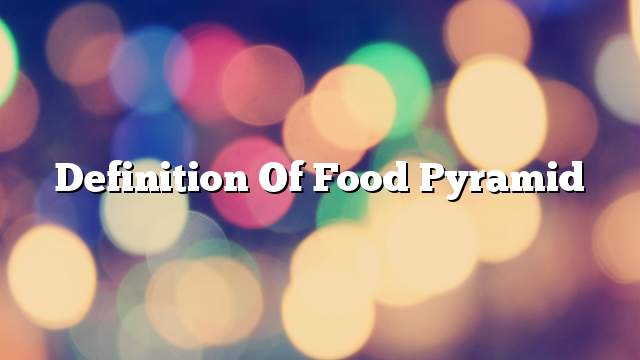the food chain
Is a guide to show the types of different foods needed by humans on a daily basis divided into groups in a way that shows the quantities required of each group, and therefore divided in the form of a pyramid has a broad base, the smaller the higher up, and was set by the US Department of Agriculture in a thousand and ninety, Specifically, the needs of the child, adolescent, young and old differ from each other. There is also a difference depending on gender. Young people need proteins and greater energy. The fact that their bodies were done While women need iron more because of what they lose each month in the menstrual cycle, as well as many other elements during pregnancy and lactation.
Groups of food pyramid
The food was divided into five groups, which the human body needs in certain quantities to build its body, perform its vital functions, and thus enjoy good health. These groups were not given names that contain more than one type of food, but generally focus on a particular type of food, More than others, namely:
- The first group: It occupies the top of the pyramid, that is, the body needs it in small quantities and limited, including sweets of all kinds, sugars, oils, butter and obesity, it provides the body energy, but the content of calories is very high, causing obesity and increased the possibility of various diseases .
- The second group is the group of milk and its derivatives, milk, cheese and others, which are rich sources of calcium important for building bones, teeth, muscle health, and others, and contains many vitamins dissolved in fat.
- Group III: This group includes various sources of protein, such as red meat such as lamb, goat, marine meat such as fish, shrimp, legumes such as lentils, beans, peas, and eggs.
- The second and third groups share the same level in the food pyramid, since both contain protein, but taking into account the amount of milk and its products in order to obtain calcium.
- Group 4: This group contains all the vegetables and fruits, which provides the human with many nutrients such as fiber, minerals, vitamins, complex carbohydrates, in addition to fluids, and the body needs a greater quantity of previous foods being the penultimate group.
- The fifth group: the base of the pyramid, the largest groups and includes different grains and products such as bread, pasta, it provides the body with the energy needed to carry out its activities, in addition to fiber and minerals.
